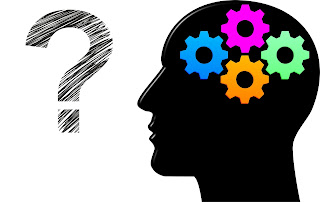Social media can be an important teaching tool if used and implemented in the correct way. There are many apps out there labeled and marketed as social media; some that entice our students more than adults! Ultimately social media in education should be used to promote and communicate the learning process, activities, and products that students create to demonstrate their growth and learning.
I use Twitter infrequently to communicate about my classroom and professional development as a teacher. I share my likes and passions as a teacher by tweeting and retweeting science-related things that I feel more people should know about. Twitter is beneficial in the way it conveys information succinctly by limiting characters in a tweet and getting right to the point. Twitter is also beneficial because it separates my personal life on Facebook from my professional life on Twitter. Students, parents, teachers, and administrators can follow me to see what’s happening in my class. In turn, other stakeholders outside my school community can learn about things in my class, just as I would seek out new ways of learning and doing from others.
Although I don’t seek out feedback on my Twitter feed, “likes” and retweets would be the best form of feedback. I have teacher friends, colleagues and administrators who follow my Twitter account but not as many students and parents follow me. At the beginning of last school year, I made an effort to communicate the fact I had a Twitter account to students and likewise to parents at open house and parent-teacher conferences. I think we’re on the cusp of parents using this as a means to glimpse their child’s school day.
Using technology with students in school has been a game-changer for me as an educator, but with it comes certain problems that I’ve learned to predict, model and reinforce with students over time. At our school, we use a program called Gaggle that informs the local police and administrators of any serious situations, suspicious pictures or words being communicated by our students while using school-issued Chromebooks or over the school’s network. Within our classrooms, teachers have the right to determine and interpret the “rights and wrongs” of technology use. In my opinion, it’s important for teachers to talk with students about the appropriate use of technology in their respective classrooms and determine fair and equitable consequences when expectations are not met. All students are expected to follow the general AUP guidelines, but teachers and students should have the autonomy to interpret those rules for their classroom.
I can clearly remember who the bullies and mean girls were growing up. Back then hurtful words were written on notes and passed around in class or spoken in open areas at recess. Bullies have been around forever, but technology now gives them a whole new platform for their actions. Cyberbullying in the 21st century cannot be ignored. As a parent of two middle school children and a teacher of high school students, I’m fearfully aware of what potentially takes place online when students interact and communicate. Most teens have devices that keep them constantly connected to the Internet. Because having a phone usually means 24 hour access to the internet, those being bullied may find themselves unable to escape or avoid the negative attention that bullies give. Any kid that has access to a digital device (phone, computer, tablet, etc), is at risk. So although my youth experiences are much different than those of my two children and the students I teach, the use of technology to harass, threaten, embarrass, or target another person is still unacceptable.
Here are some signs I think might indicate cyberbullying based on what I’ve witnessed with students and their devices (their school-issued Chromebook and their personal phone) in my school:
- a student seems distracted by their phone or upset after glancing at their phone screen
- a student hides tabs on their Chromebook or acts secretive when I approach their desk/table
- students who avoid class discussion and seem reserved or checked-out
- skipping lunch or eating lunch with a smaller (trusted) group of students in a teacher’s room
- student’s grades start to slide
- feeling easily overwhelmed or angered
Just like trying to identify students with mental health issues like stress, anxiety and/or depression, however long-term or infrequent a teacher might see changes in a student, we should always take the precaution to check in with the student, their parent/guardian and notify a counselor immediately.






































